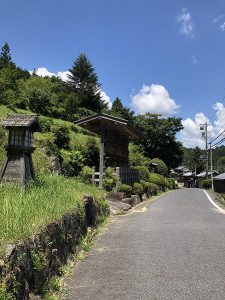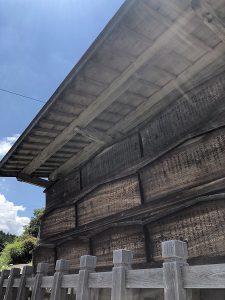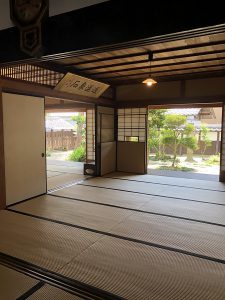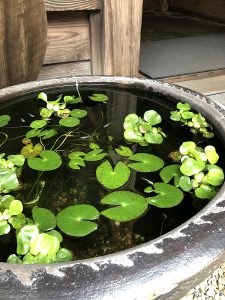中山道「大湫宿」を巡ってみました(愛知県千種区姫池通 高価買取 古美術風光舎名古屋店)
2021.07.27
みなさまこんにちは、スタッフYです。
私、オリンピックのTVチェックに昨日は忙しかったのですが、皆さまは如何お過ごしだったでしょうか。
TVにつきっきりで、アスリートたちの雄姿に寄り添っていますと、こちらも力がはいってしまい、少々疲れましたので、先日、私の趣味の一つ、ふらり日帰りドライブ旅を思い立ちました。いつも、当日朝決めるという、ノープランにもほどがあるのですが、今回は中山道を行く旅を思いつき決行。というか、まあまあ近くなので、ふらりと行ったまでですが笑。
Hello everyone, this is Staff Y.
I was busy checking the Olympic TV yesterday, but how are you all doing?
When I was on TV and snuggling up to the male figures of the athletes, I was a little tired because I was a little tired, so the other day I thought of one of my hobbies, a day trip. There is always a no-plan to decide on the morning of the day, but this time I came up with a trip to Nakasendo and decided to go. I mean, it’s pretty close, so I’m just flirting, but lol.

ここから、大湫宿
From here, Okutejuku
と言いますのも、古美術風光舎名古屋店のございます愛知県は、昔から中山道や東海道、美濃路、飯田街道をはじめ、多くの歴史街道が通っている昔からの交通の要。先日、旧東海道沿いの有松鳴海近辺のこともブログにて掲載いたしましたが、街道萌えの方には絶好の地の利なのであります。
で、今回は中山道なのですが、この中山道、江戸時代の五街道のひとつで、京と江戸を結んだ街道ということは、皆さま遠い昔お勉強いたしましたよね。
中山道は木曽を通るので「木曽路」とも呼ばれ、参勤交代大名や皇族のお輿入れにも盛んに利用されました。というのも、西国と東国とを結ぶ重要な街道だった中山道。河留めの多い大井川や浜名の渡し、桑名の渡しなどがある東海道と違い、中山道は水の不便がほとんどないことから女性も多くこの道を歩いたようです。
全工程が約540kmの街道に69ヶ所の宿場が置かれており、東海道のように、その後開発により大きな幹線道路が通ったところも少なく、昔の景観のままで残っている宿場町も数々存在しているのは、後のためにはよかったのではないでしょうか。現在も有名な宿場町として、妻籠宿や、馬籠宿、奈良井宿などは映像や写真を目にすることも多いですよね。そのため、一気にタイムトリップする感覚を体感できると、ここ最近、海外からのお客様にも木曽路は人気だそうです。
ですが、今回はあえて皆さまご存じないと思われる「大湫宿」(岐阜県瑞浪市)のご紹介を致します。ここは歴史好きの方、一度は訪れてもよいかもしれません。
その理由は後程お伝えするとして、大湫宿は江戸から47番目の宿、海抜510メートルの高地に設けられている中山道の中で一番標高の高い宿場町とのこと。江戸へ90里半、京都へ43里半、東隣りの大井宿へ3里半、西隣の細久手宿へ1里半、美濃16宿の中で最高所に位置し、それだけ急坂が続いており、旅人も人馬役からも難所とされていました。小さな宿場町でしたが、本陣、脇本陣、問屋場などの跡もあり、宿場町としての機能はそろっていたようです。
Aichi Prefecture, where the antique art Fukosha Nagoya store is located, has long been a key point of transportation through many historical highways, including Nakasendo, Tokaido, Minoji, and Iida Kaido. The other day, I posted a blog near Arimatsu Narumi along the old Tokaido, which is a great place to go around such a highway.
So, this time it’s Nakasendo, but this Nakasendo, one of the five highways of the Edo period, was a highway that connected Kyoto and Edo, but everyone studied a long time ago.
Nakasendo is also called “Kiso-ro” because it passes through Kiso, and it was also used extensively for the change of attendance daimyo and the imperial family. This is because Nakasendo was an important road connecting Saigoku and Togoku. Unlike the Tokaido, which has the Oi River, Hamana Pass, and Kuwana Pass, the Nakasendo has almost no inconvenience of water, so it seems that many women walked along this road.
There are 69 post stations on the highway with a total process of about 540 km, and there are few places like the Tokaido where large main roads have passed due to subsequent development, so there are many post towns that retain the old landscape. I’m sorry. As a famous post town even now, Tsumago-juku, Magome-juku, Narai, etc. may often see images and photographs. In addition, Kisoji has become popular with overseas customers these days because they can experience the feeling of a time trip at once.
However, this time we would like to introduce “Okutejuku” (Mizunami City, Gifu Prefecture), which you may not know. If you like history, you may visit this place once.
I will tell you the reason later, Okute-juku is the 47th inn from Edo, and it is the highest post town on the Nakasendo, which is located at a high altitude of 510 meters above sea level. 90 ri and a half to Edo, 43 and a half ri to Kyoto, 3 and a half ri to Oi-juku to the east, 1 and a half to Hosokute-juku to the west It was considered a difficult place for both travelers and horsemen. It was a small post town, but it seems that it had all the functions of a post town, with traces of Honjin, Wakihonjin, and wholesale stores.

時代劇によく登場する定書の写しですが、
読めません焦
It is a copy of a standard book that often appears in historical drama, but I can’t read it.
宿内の町並みとしては、十三峠西端の寺坂を下りた北町から、白山町、中町、神明町、西町までの東西3町6間(340メートル)で、枡形は北町につくられ、本陣は白山町の北側、問屋場と脇本陣は中町の北側にあり、往還に沿ってつくられた細長い町並み。また家々の地割は6間半平均に正しく割られ、家々の境界にはすべて石積みの側溝が施されていて、新宿設置の様子がうかがわれます。
また、ここ「大湫宿」は、皇女和宮が江戸城にお輿入れされる際にこの宿場に宿泊したというと宿場町でして、皇女和宮が宿泊した本陣は現在小学校跡となり、皇女和宮が道中詠んだとされる歌碑が建っております。つい最近のNHK大河ドラマ「青天を衝け」にも、その豪華なお輿入れの話があったことを記憶にある方もおいでではないでしょうか。
現在残っている旅籠であった丸森邸(国登録有形文化財)は資料館兼休憩するスペースとして保存されていまして、そちらの資料によりますと、皇女和宮のお輿入れの行列は4日間に及ぶものだったようです。お供は5000人、人足等2800人、馬800頭という、未だかつてない行列だったようでして、大湫宿には30件の旅籠がありましたが、それでも宿が足りず、オリンピックの選手村ではないですが、急遽小屋などを増築したり村を上げての大変な準備だったようです。あの地区に5000人も宿泊したとは、ここ、丸森邸にもたくさんのお供が宿泊して、大騒ぎだったのでしょうね。また現在立ち並ぶ、元旅籠のお宅も昔の屋号が玄関についており、お住まいの方曰く、現在も普段は屋号で呼び合うようです。
The townscape of the inn was 6 ken (340 meters) from Kitamachi, which went down the Terasaka at the western end of the 13th pass, to Hakusancho, Nakamachi, Shinmeicho, and Nishimachi. The Honjin is located in Kitamachi, the main camp is on the north side of Hakusancho, and the wholesale store and Wakihonjin are on the north side of Nakamachi. In addition, the land allocation of the houses is correctly divided into 6 and a half ken, and all the boundaries of the houses are guttered with masonry, which shows the installation of Shinjuku.
Here, “Okute-juku” is a post town where Princess Kazu stayed at this post when she was introduced to Edo Castle, and the main camp where Princess Kazu stayed is now the site of an elementary school, and Princess Kazu is on the way. There is a monument that is said to have been written. Some of you may remember that the recent NHK Taiga drama “Reach Beyond the Blue Sky” also had a story about its gorgeous swordsmanship.
The remaining Marumori residence (nationally registered tangible cultural property) has been preserved as a museum and a resting space, and according to the materials there, the procession of the Princess Kazu’s troupe lasts for four days. It seems. It seems that there was an unprecedented procession of 5,000 people, 2,800 people, and 800 horses, and there were 30 cottages in Okute-juku, but there were still not enough inns, and the Olympic Village It’s not, but it seems that it was a difficult preparation to expand the hut and raise the village in a hurry. I think it was a big fuss because many companions stayed here at Marumori House. In addition, the houses of Hatago, which are lined up now, also have the old shop name at the entrance, and the residents say that they usually call each other by the shop name.

お供の方、ここで旅の疲れを癒していたのでしょう
My companion, I think he was healing the tiredness of the trip here
というようなお話を、ガイドの方とゆっくりお話をすることができました。その節はありがとうございました。
その後、各旅籠の面影をたどりながら街道をしばしゆっくり歩いて参りましたが、炎天下はたまたオリンピック開催中ということもあり、訪れる人もなく、これがまた独り占め感が贅沢でたまりませんでした。というわけで、歴史好きの方、当時の思いを馳せるのでしたら、密かに今かもしれませんね。
また、少し行きますと、大湫宿~琵琶峠~細久手宿に向かう途中に、当時の石畳の中山道が残っています。峠に向かって山を登っていく長い石畳のようでしたので、今回は断念いたしましたが。
So, I was able to talk slowly with the guide. thank you for your help.
After that, I walked slowly along the highway while following the remnants of each Hatago, but because the Olympics were being held under the scorching sun, there were no visitors, and this was a luxurious feeling of monopoly. So, if you are a history lover and you can think of those days, it may be secretly now.
Also, if you go a little, you will see the cobblestone Nakasendo on the way to Okutejuku-Biwa Pass-Hosokute-juku. It looked like a long stone pavement climbing a mountain toward the pass, so I gave up this time.

ここから、琵琶峠にのぼります
From here, climb to the Biwa Pass
はい。駆け抜けてレポートいたしましたが、いかがだったでしょうか。
大湫宿、今では、国道・中央自動車道・JR中央線などすべてが南麓の土岐川沿いに開かれ、かつて中山道の難所の一つとされた十三峠や西方の琵琶峠の沿道とともに、本陣山の南麓に神明神社の大杉(残念ながら昨年の台風にて倒木)を囲むようにして、往時のままの姿をとどめております。
木曽川に沿って険しい峠を越え、深い谷を抜け、山の底を縫うようにして伸びる木曽路、そこにあるこのような宿場町に立ち寄ると、遠い時代の旅籠の活気ある声や、行灯の灯火が出迎えてくれたのだろうなといった光景が、確かにすぐそこに目に浮かびますね。
さらに、このタイムトリップのまま、街道を巡っていくと首都高の架かっていない木製の日本橋までたどり着けるんじゃないかと、錯覚していまいそうになるのですが…。
わくわくと妄想を遥か江戸までつないでくれる街道、もはや時の旅人となって歩みをすすめてしまいそうですが、炎天下のため、本日はここまでとしておきましょう。
街道萌えの旅、また時折ご報告いたします。
Nowadays, the national highway, Chuo Expressway, JR Chuo Line, etc. are all opened along the Toki River at the southern foot of the mountain. Surrounding the Osugi of Shinmei Shrine at the southern foot of the mountain, it retains its original appearance, but it is a Kiso road that stretches along the Kiso River, crossing a steep mountain pass, passing through a deep valley, and sewing the bottom of the mountain.
The lively voice of Hatago in the distant era and the sight of the lanterns welcoming you can certainly come to your mind. If you follow the highway as it is, you will reach Edo, and how exciting the highway is!
**********************
生活様式の変化とともに、大切なお品を整理されている方も多いことと思われます。
ここ風光舎では、古美術品や骨董品の他にも絵画や宝石、趣味のお品など様々なジャンルのものを買受しております。
お片付けをされていて、こういうものでもいいのかしらと迷われているものでも、どうぞお気軽にご相談下さいませ。
風光舎は、出張買取も強化しております。
愛知県内はもちろん、岐阜県・三重県その他の県へも出張いたします。
どんなにご近所の方でもお伺いできますので、まずはお電話お待ちしております。
愛知県名古屋市千種区・骨董 買取
『古美術 風光舎 名古屋店』
TEL 052(734)8444
10:00-17:00 OPEN
It seems that many people are organizing important items as their lifestyle changes.
Here at Fukosha, in addition to antiques and antiques, we also purchase paintings, jewelry, hobby items, and other genres.
Please feel free to contact us even if you have been tidied up and are wondering if this kind of thing is okay.
Fukosha is also strengthening business trip purchases.
We will make business trips not only to Aichi prefecture but also to Gifu prefecture, Mie prefecture and other prefectures.
No matter how close you are, we are looking forward to your call.
Chikusa Ward, Nagoya City, Aichi Prefecture, antique purchase
“Ancient Art Fukosha Nagoya Store”
TEL 052 (734) 8444
10:00-17:00 OPEN


